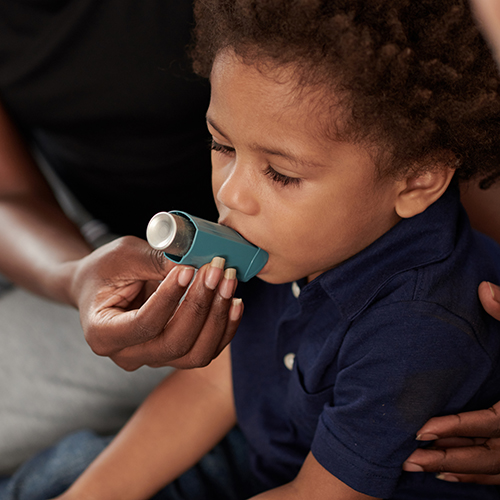March 2023
If you or your child has asthma, you may worry symptoms will flare up without warning. But you don’t have to live your life in fear.
Your healthcare provider can help you develop an asthma management plan, also known as an Asthma Action Plan. This is a set of written rules to help you prevent asthma attacks, along with steps to follow during an asthma attack. The plan also tells you when you should call your doctor and when you should call 911 or go to the emergency room.
If you or a loved one has asthma, here’s what you need to know about an Asthma Action Plan.
What’s in an Asthma Action Plan?
While every Asthma Action Plan is different, in general they include:
- Your name and date of birth.
- Your asthma severity.
- Your asthma triggers.
- Your peak flow rate personal best. According to the American Lung Association, that’s a measure of your ability to push air out of your lungs in one fast blow. You can take your measurement using a portable handheld device known as a peak flow meter.
- Your doctor’s name and phone number.
- An emergency contact person, a backup contact person, and their phone numbers.
- Specific instructions on what asthma control medications to take and how many puffs of your rescue inhaler or quick-relief medicine to use depending on your symptom zone.
- Permission and instructions for school staff or other caregivers for your child to follow the instructions and for them to give your child the specific drugs listed based on their symptom zone.
Information on an Asthma Action Plan will help if someone needs to call a doctor — or 911 — for you or your child.
How is an Asthma Action Plan organized?
Asthma Action Plans are often broken down into three color zones, like a traffic light for living your life with asthma. Each zone contains information specific to you, including what steps you should take when you’re in that zone.
- The green zone. Your asthma is well controlled by taking your regular asthma control medicine. You don’t have any coughing, wheezing, shortness of breath, or chest tightness. You sleep well at night. You can go on with your normal activities. Your peak flow is 80% of your personal best.
- The yellow zone. This is when you have one or more symptoms during the day or your asthma wakes you up at night. You can do some but not all of your normal activities. Your peak flow is 50% to 75% of your personal best. Within an hour of taking your rescue medications, you start to feel better. If symptoms don’t improve — or if they get worse over 24 hours — follow the steps for the red zone.
- The red zone. When you’re in the red zone, you have numerous and severe symptoms. You can’t breathe well or do normal activities at all. Symptoms haven’t improved or have gotten worse over 24 hours. Rescue medications don’t help. Your peak flow is less than 50%. Call 911 if you experience any of the following:
- You’re having trouble walking or talking because you can’t breathe.
- Your lips or fingernails are blue.
- You’re still in the red zone after 15 minutes and following the medication advice for this zone.
Why sharing your plan is important
For an Asthma Action Plan to work, you need to follow it. If you or your child has asthma, keep your Asthma Action Plan in a place where everyone in your home can see it, such as on the refrigerator or kitchen wall.
If your child has asthma, it’s important that anyone who takes care of them has a copy of their Asthma Action Plan. This includes:
- Their school, daycare, or aftercare provider.
- Their sports coach.
- Their babysitter, grandparents, or other caregivers.
Creating an Asthma Action Plan
Your doctor or asthma specialist will typically create an Asthma Action Plan specific to you or your child.
You can also create an Asthma Action Plan for you or your child using an online tool at www.lung.org. A printable template is available in both English and Spanish.
After you create your own plan, share it with your healthcare provider to make sure it covers everything you or your child needs.



